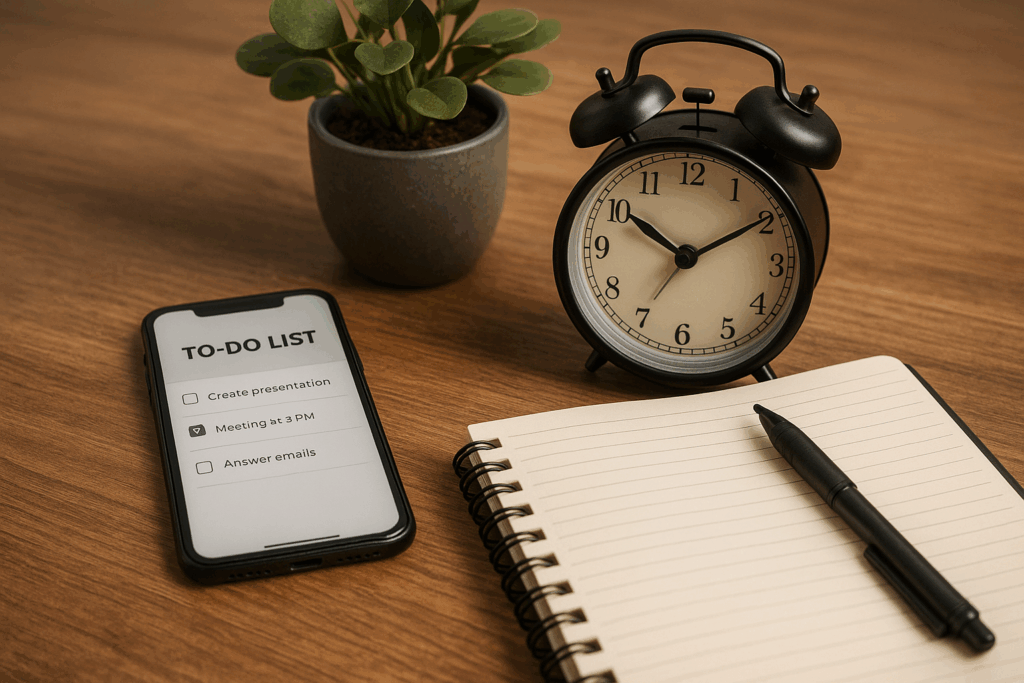Introduction
We’ve all been there—staring at a to-do list while scrolling through our phones. Procrastination isn’t about laziness. It’s often your brain trying to protect you from stress, boredom, or overwhelm. In this post, you’ll learn why you procrastinate and how to stop procrastinating using simple brain-based techniques that actually work.
Why Stopping Procrastination Matters
Procrastination may feel harmless at first, but it can quickly grow into a big problem. Missed deadlines, last-minute stress, and broken promises to yourself can hurt your confidence. Over time, this can even affect your health, your career, and your relationships.
When you learn how to stop procrastinating, you gain more than just productivity—you also feel more in control, focused, and motivated.
Start with Self-Reflection
Before trying any strategy, take a moment to understand why you’re procrastinating. Is it because the task feels too hard? Are you afraid to fail? Or is it simply boring?
Here are a few examples:
- You keep putting off studying because you don’t know where to start.
- You delay workouts because you feel too tired or unmotivated.
- You avoid difficult conversations because they make you uncomfortable.
Ask yourself:
- What am I avoiding?
- What feelings come up when I think about doing this task?
- What would I gain if I actually finished it?
This kind of reflection helps you get clear on your real obstacles—and how to work with them.
What Science Says About Procrastination

Neuroscience shows that procrastination is linked to how your brain manages stress and emotions. When a task feels overwhelming, the amygdala (the brain’s emotional center) sends out a danger signal. Your brain then chooses a short-term reward—like watching a video or checking social media—instead of facing the hard thing.
But there’s good news:
Your prefrontal cortex, the part of your brain responsible for planning and decision-making, can be trained to override that instinct. With small habits, you can retrain your brain to act instead of avoid.
Brain-Based Strategies That Actually Work
1. Use the “5-Minute Rule”
Tell yourself you’ll just do the task for 5 minutes. Often, once you start, momentum builds and you keep going. This lowers the emotional barrier.
2. Break It Down
Big tasks = big fear. Break your project into tiny, simple steps. Example:
Instead of “Write a paper,” start with “Open laptop” → “Create document” → “Write title.”
3. Pair It With Something Pleasant
Make hard tasks easier by pairing them with something you enjoy:
- Listen to music while cleaning
- Light a candle while journaling
- Eat a small treat after completing a task
4. Remove Distractions
Your environment matters. Put your phone in another room. Use tools like:
- Forest (app that rewards focus)
- Focus@Will (music for productivity)
5. Set a Reward
Your brain loves rewards. Give yourself something to look forward to, like:
- 10 minutes of gaming after a task
- A walk outside
- One episode of your favorite show
Tips for Beginners
If you’re new to this, don’t try to change everything overnight. Start with just one strategy.
- Choose a task you’ve been avoiding
- Use the 5-minute rule
- Celebrate the win—even if it’s small
Also, keep a “done list” at the end of the day. It builds positive momentum.
Common Mistakes to Avoid
- ❌ Waiting until you “feel motivated”
- ❌ Making your to-do list too long
- ❌ Trying to multitask
- ❌ Being too hard on yourself when you slip
Instead, aim for progress, not perfection. Everyone struggles with procrastination sometimes—it’s what you do next that matters most.
Helpful Tools and Routines

Building a simple routine can help train your brain to focus. Here are some tools and habits to try:
- Morning Focus Routine:
- Drink water
- Review 3 tasks for the day
- 10-minute quiet time or journaling
- Apps That Help You Stop Procrastinating:
- Todoist – for clear task lists
- Notion – for planning and goal setting
- Pomofocus – for using the Pomodoro Technique (25 minutes work, 5 minutes rest)
- Evening Reflection:
- Write down what you got done
- Reflect on what went well
- Plan one task for tomorrow
Conclusion: You Can Beat Procrastination

Stopping procrastination doesn’t happen overnight. But with small changes, you can retrain your brain, reduce stress, and finally get things done. It’s not about doing more—it’s about doing what matters, one step at a time.
👉 Join the Procrastination Masterclass:
Overcome Procrastination: Build Motivation & Get Things Done
Learn the full system and tools to stay focused, feel motivated, and take daily action.
FAQ: How to Stop Procrastinating
1. Why do I procrastinate even when I want to work?
Because your brain sees the task as uncomfortable or stressful, so it chooses short-term comfort instead.
2. Can I really change my habits if I’ve always been a procrastinator?
Yes! With small daily steps and brain-based strategies, anyone can build better habits over time.
3. How do I stay consistent and not fall back into old patterns?
Track your progress, celebrate small wins, and have a simple daily routine that supports focus.
4. What if I start strong but always lose motivation after a few days?
That’s normal. Use the “5-minute rule” to keep going, and make tasks feel smaller and less overwhelming.
5. Do productivity tools really work, or are they just distractions?
They work when used correctly. Choose simple tools and build a system that supports, not overwhelms you.

Leave a Reply